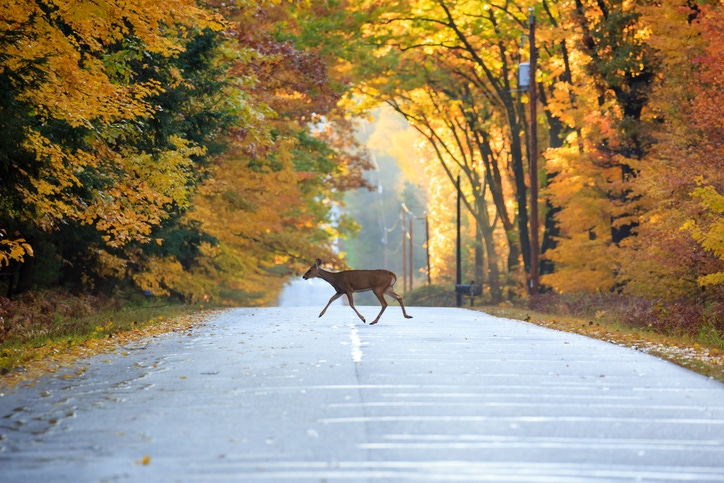
It was about this time eight years ago that I likely killed my first deer. It certainly wasn’t my choice since I’m not a hunter. The deer chose to cross a four-lane highway in Northeast Georgia as my wife, dog, and I were heading home at about 65 mph. There was no chance to brake as the deer galloped out of the woods and into the path of our new car.
The collision was abrupt: the front end of the car was crumpled, front airbags deployed, and we slowly came to a stop on the side of the highway. Fortunately, none of us were hurt. I can’t say the same for the poor deer, which somehow managed to continue on across the highway, disappearing into more woods.
Fast forwarding to a recent November weekend trip from the Atlanta area to Columbia, S.C., I counted 16 deer carcasses along the highways. Seeing that many was startling, and I probably didn’t see all of them. The risk of collision is apparently increasing as urban and suburban sprawl reduces the natural habitats of wildlife.
The riskiest time to run into a deer is during mating season, October through December. Auto insurance companies, which naturally have a special interest in deer-car mishaps, compile detailed statistics.
State Farm, the largest insurer of autos, conducts an annual study on animal collisions. Data released this year put the odds of U.S. drivers hitting an animal at 1 in 127 this year. West Virginia, followed by Pennsylvania, is the leading state for animal collisions. In the Delta region, Mississippi ranks in the top 10, with Arkansas not far behind.
The Federal Highway Administration estimates there are one million to two million crashes each year involving autos and large animals such as deer. These cost an estimated $8 billion annually. The FHA also estimates these collisions cause 200 deaths and 26,000 injuries. My collision in 2015 caused more than $9,000 in damage to my nearly new car, but thankfully, no injuries.
So, what is the solution? Some say reducing speed limits and reducing the deer population. I favor construction of wildlife overpasses and crossings. These are prevalent in some European countries.
In North America, Banff National Park in Alberta, Canada, is well known for its wildlife overpasses, which reportedly have significantly reduced collisions. Similar overpasses are said to be effective in Wyoming, Nevada and Montana. In Washington State, the Snoqualmie Pass wildlife overpass on Interstate 90 is credited with providing a safe crossing for deer and elk.
The Pew Charitable Trusts is among organizations calling on Congress to provide matching funding for these types of projects. Of course, other solutions are needed for country roads.
In the meantime, slow down and keep an eye out for Bambi and family.
About the Author(s)
You May Also Like






